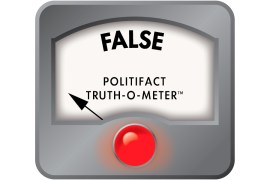Medicaid Expansion Boosted Emergency Room Visits In Oregon, Study Finds
A new study of a 2008 expansion of Oregon's Medicaid program showed those with new coverage used emergency rooms 40 percent more often than other adults, throwing some water on the long-held argument that expanding Medicaid coverage lowers ER usage and boosts primary care visits.
NPR: Medicaid Expansion Boosted Emergency Room Visits In Oregon
Giving poor people health insurance, the belief was, would decrease their dependence on hospital emergency rooms by providing them access to more appropriate, lower-cost primary care. But a study published in the journal Science on Thursday finds that's not the case. When you give people Medicaid, it seems they use both more primary care and more emergency room services (Rovner, 1/2).
The Oregonian: Oregon Study Finds That Medicaid Coverage Increases Emergency Room Visits
Advocates of universal health coverage have long argued that better access to primary care will lead to a reduction in costly emergency room visits. But a new study conducted in Oregon has found the reverse is true. Researchers poring through hospital administrative records found that expansion of the Medicaid-funded Oregon Health Plan in 2008 led to a 40 percent increase in emergency department usage by people in the 15 months after they enrolled, according to a study released Thursday in the journal Science (Budnick, 1/2).
Los Angeles Times: Expanding Medicaid Increases ER Visits In Oregon Study
An Oregon Medicaid expansion program found that low-income adults who were covered by government health insurance had visited hospital emergency rooms 40 percent more often than other adults. The study, published online Thursday in the journal Science, comes at a time when many states are expanding Medicaid as part of the Affordable Care Act, or Obamacare. While federal and state policymakers have argued that expanding Medicaid would reduce costly and inefficient use of hospital emergency rooms by increasing access to primary healthcare, the Science study suggests this is not the case (Morin, 1/2).
The New York Times: Emergency Visits Seen Increasing With Health Law
Supporters of President Obama’s health care law had predicted that expanding insurance coverage for the poor would reduce costly emergency room visits because people would go to primary care doctors instead. But a rigorous new experiment in Oregon has raised questions about that assumption, finding that newly insured people actually went to the emergency room a good deal more often (Tavernise, 1/2).
The Washington Post's Wonkblog: Study: Expanding Medicaid Doesn’t Reduce ER Trips. It Increases Them.
As the health care law expands Medicaid to cover millions more Americans, a new Harvard University study finds that enrollment in public program significantly increases enrollees' use of emergency departments. The research, published Thursday in the journal Science, showed a 40 percent increase in emergency department visits among those low-income adults in Oregon who gained Medicaid coverage in 2008 through a state lottery. This runs counter to some health-care law supporters' hope that Medicaid coverage would decrease this type of costly medical care, by making it easier for low income adults to see primary care providers (Kliff, 1/2).
The Wall Street Journal: Putting The Uninsured On Medicaid Doesn't Cut ER Visits
Some supporters of President Barack Obama's health care overhaul say that putting uninsured Americans on Medicaid will reduce costly emergency-room visits by giving them more access to care in other settings. But a new study found the reverse: A group of 10,000 low-income Oregon residents who recently obtained Medicaid coverage visited ERs 40 percent more often than those without insurance (Beck, 1/2).
The Associated Press: Study Finds Medicaid Expansion Drove Up ER Visits
A new study has found that people enrolled recently in Medicaid went to the emergency room 40 percent more frequently than others, often seeking help for conditions that could be treated less expensively in a doctor's office or an urgent care clinic (Cooper, 1/2).
Marketplace: How Obamacare Will Change The Emergency Room
A new report looking at the Oregon Medicaid program compares emergency room use between the uninsured and people with Medicaid -- the health care program for primarily low income and disabled people. And the report already has pundits worked up, especially with 9 million Americans projected to newly sign up for Medicaid this year under the Affordable Care Act. The reason this is so hot -- at least politically -- is because the report over turns conventional health care thinking (Gorenstein, 1/2).
Medpage Today: Medicaid Growth Burdens EDs
A sudden influx of patients insured through Medicaid was associated with a 40 percent increase in emergency department visits, researchers found. Under a lottery-based Medicaid program in Oregon, Medicaid enrollment increased the probability of visiting an emergency department by 7 percentage points and increased the number of emergency department visits by 40 percent relative to a control mean of 1.02 visits, according to Sarah Taubman, ScD, of the National Bureau of Economic Research in Cambridge, Mass., and colleagues (Petrochko, 1/2).






